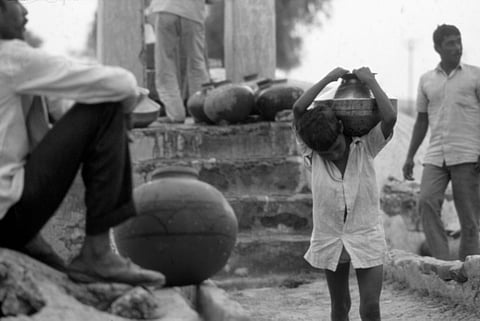
The kundi (also known as a kund) is a traditional rainwater harvesting system that is predominantly found in desert regions, such as Churu in Rajasthan, India. This system is designed to capture and store rainwater, which is crucial in arid and semi-arid areas where water is scarce and rainfall is unpredictable.
A kundi typically consists of a deep, circular or rectangular pit that is either dug into the ground or constructed above ground. It is usually lined with stones, bricks, or other materials to reinforce the structure and prevent seepage.
The pit is often covered with a lid or stone slab to prevent contamination from debris and to reduce evaporation. Rainwater is collected through channels or from rooftops, then funnelled into the kundi, where it is stored for use during the dry season.
The kundi serves as an efficient method of water conservation, particularly in places where surface water is limited, and access to groundwater is difficult. It helps to ensure that water is available for drinking, irrigation, and other domestic purposes when rainfall is scarce.
By storing rainwater, the kundi also reduces dependency on other sources of water and promotes sustainability in water management.
This traditional method is an excellent example of how local knowledge and architectural ingenuity can address environmental challenges.